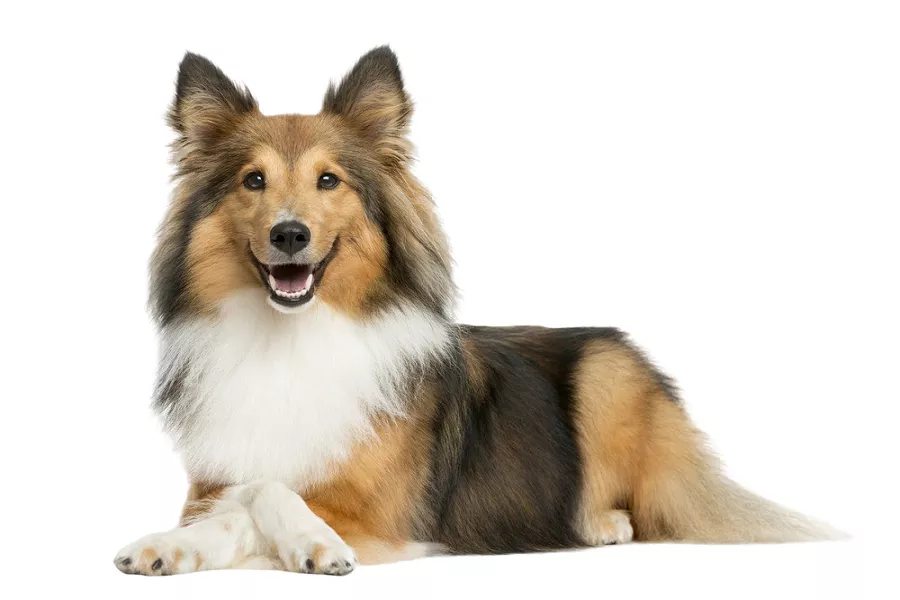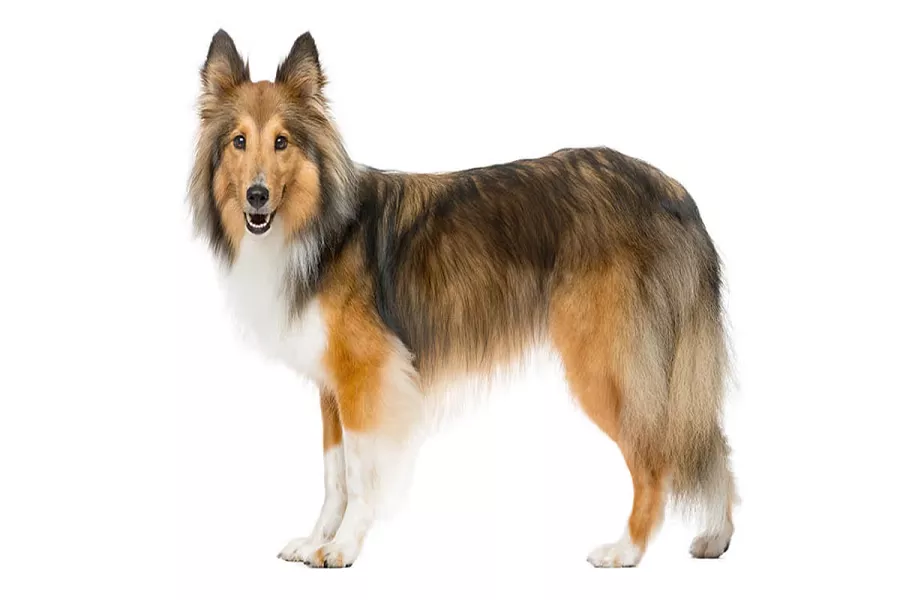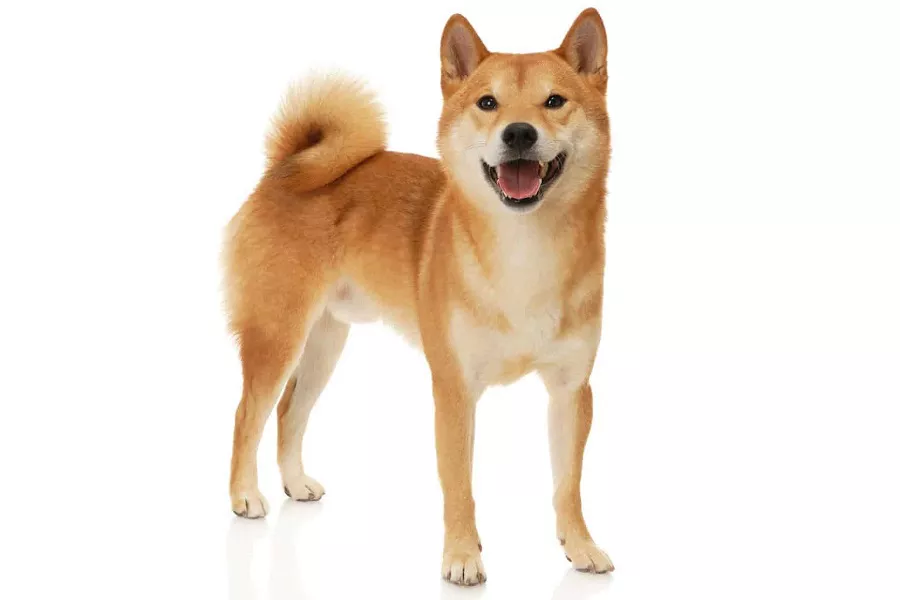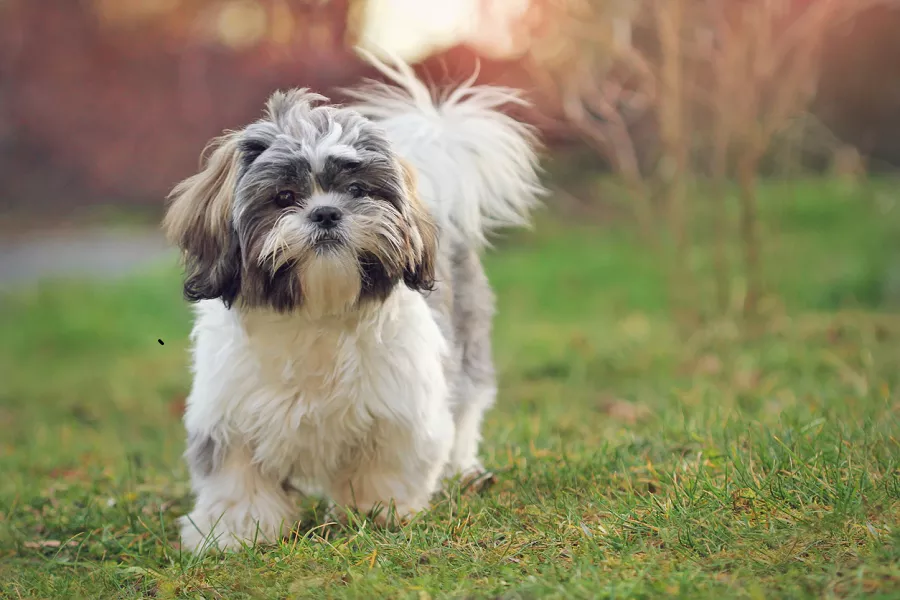What is a Sheltie?
The sheltie, also known as the Shetland Sheepdog, is a small breed of Collie, well-proportioned, beautiful, and easily mistaken for a rough-coated collie. The Shetland Sheepdog‘s ancestor is a shepherd breed, making it an excellent family dog and a clever guard dog.
The Sheltie is far more popular in the UK and the US than the Collie and is one of the ten most popular breeds of domestic dogs.
What does a shelfie look like?
Sheltie is 33~41cm tall and weighs 6~7kg. Body length slightly greater than body height. The head is long, blunt, wedge-shaped, tapering from the ears to the nose. The eyes are medium in size, dark in color, almond-shaped, and set slightly obliquely. Ears are relatively small, flexible, set high, 3/4 erect, with tips folded forward. The color must be dark black, except for rue dogs whose eyes are allowed to be blue or rue. Round muzzle, equal in length to the skull, meeting at the inner corner of the eye. The lower jaw is deep and well developed, extending to the nostrils, which must be black. Scissor bite of teeth. The neck is muscular, arched, and of sufficient length to hold the head proudly. The back is level and muscular. The chest is deep and extends to the elbows. Ribs well spread and abdomen moderately raised. The waist is slightly arched, while the hips gradually slope back. The hip bone (pelvis) forms a 30° angle with the spine. The tail is fairly long, and the ends of the coccyx can extend at least as far as the hocks when the tail hangs down the hind legs. At rest, the tail posture is straight down or slightly bent. The tail is usually raised when alert, but never over the back. The forelegs are straight, muscular and clean, with strong bones. Feet are oval and compact, with well arched toes. The pads are deep and hard, and the toenails are hard and strong. The thighs are broad and muscular.
Sheltie living habits
The personality of the sheltie will vary from breeder to breeder, and they are loyal and enthusiastic to their owners because they are naturally happy to be with their owners. The Shetland Sheepdog is smart, intelligent, lively and active, loyal to its owner, but wary of strangers and highly alert.
Sheltie rearing
Raising a shelterie is a very meticulous job. The configuration of dog food is particularly important. The reasonableness of nutrients will affect the dog’s life. According to the nutritional components of various feeds and the nutritional needs of dogs, they are selected separately and matched together.
First of all, it is necessary to consider meeting the needs of protein, fat and carbohydrates, and then appropriate supplementation of vitamins and inorganic salts, first considering the quality, and then considering the quantity.
The second is not to feed a single feed for a long time, so as not to cause anorexia, it is necessary to change the formula of the diet and adjust the feeding in time.
The third is to consider the digestibility of food. The food eaten in the body cannot be digested, absorbed and utilized. For example, the digestibility of vegetable protein is 80%, and 20% cannot be utilized. Therefore, the content of various nutrients in the diet should be higher than the nutritional needs of dogs.
Fourth, pay attention to hygiene, feed should be fresh, clean and easy to digest, and moldy and spoiled feed should not be used.
Reminder: For more knowledge about dog feeding, dog training, dog grooming, dog breeding, please pay attention to: mtedr.com, providing you with different kinds of dogs.


























